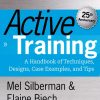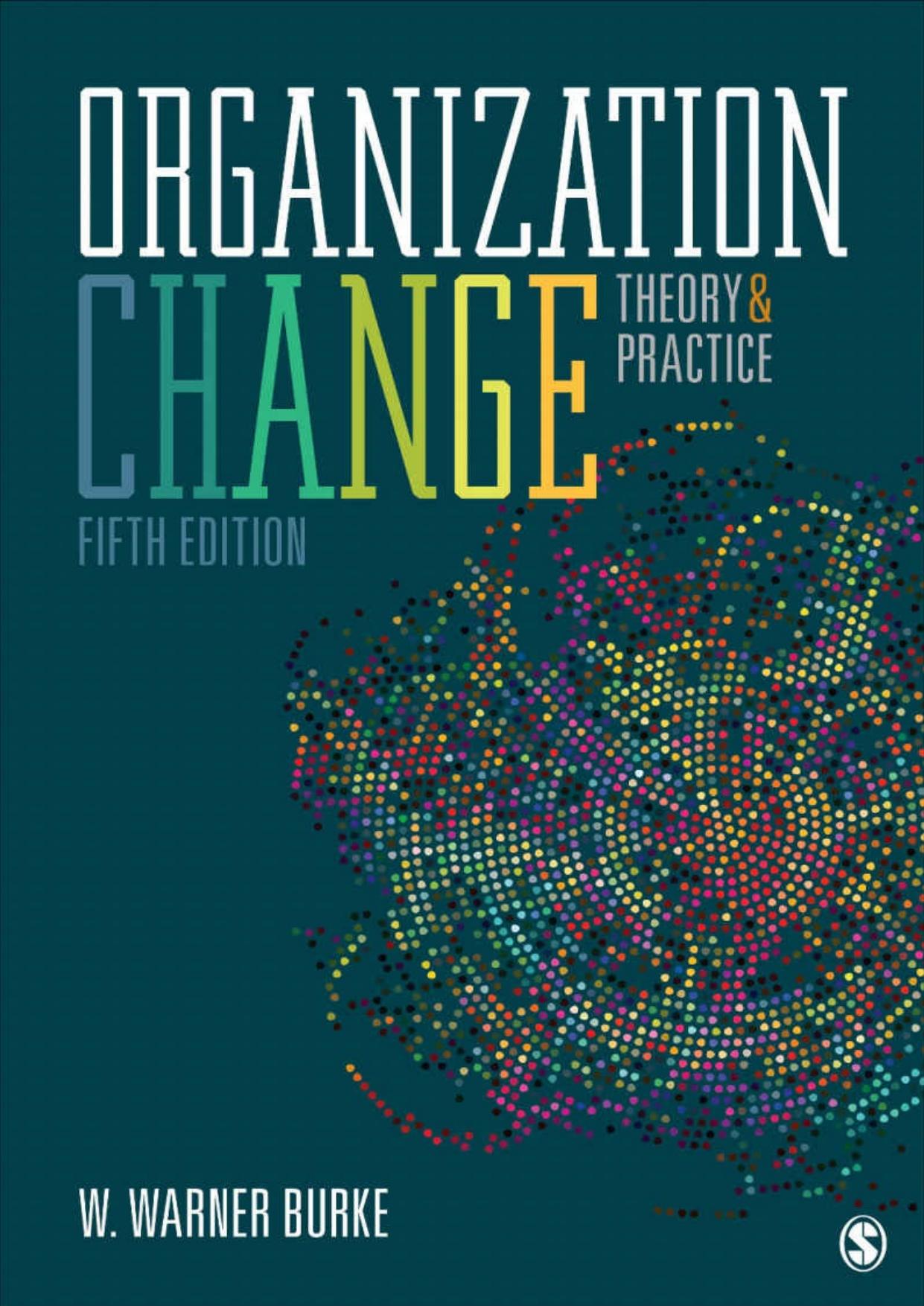Organization Change Theory and Practice 5th Edition by Warner Burke 1506357997 9781506357997
$70.00 Original price was: $70.00.$35.00Current price is: $35.00.
Instant download Organization Change Theory and Practice 5th Edition by W. Warner Burke after payment
Organization Change Theory and Practice 5th Edition by Warner Burke – Ebook PDF Instant Download/Delivery: 1506357997, 9781506357997
Full dowload Organization Change Theory and Practice 5th Edition after payment

Product details:
• ISBN 10:15063579
• ISBN 13:97815063
• Author: Warner Burke
Change is a constant in today′s organizations. Leaders, managers, and employees at all levels must understand both how to implement planned changed and effectively handle unexpected change. The Fifth Edition of the Organization Change: Theory and Practice provides an eye-opening exploration into the nature of change by presenting the latest evidence-based research to discuss a range of theories, models, and perspectives on organization change. Bestselling author, W. Warner Burke, skillfully connects theory to practice with modern cases of effective and ineffective organization change, recent examples of transformational leadership and planned and revolutionary change, and best practices to successfully influence change. This fully-updated new edition also includes a new chapter on healthcare and government organizations, offering practical applications for non-profit organizations.
Organization Change Theory and Practice 5th Table of contents:
Chapter 1 Sources for Understanding Organization Change
Introduction and Overview
A Short Story of Launching Organization Change
Chapter 2 Rethinking Organization Change
The Paradox of Planned Organization Change
Making the Case for Organization Change
Changing Corporations
Changing Government Agencies
Changing Higher Education Institutions and Nonprofit Organizations
Summary
Personal Declarations and Points of View
The Metaphor of Choice
The Theories of Choice
Types of Organization Change
Levels of Organization Change
How Organization Change Occurs
The Content and Process of Organization Change
Organizational Models
The Organizational Model of Choice
Organization Change Should Be Data-Based and Measured
Planned Organization Change Requires Leadership
Planned Organization Change Is Complex
Summary
A Closing Request
Chapter 3 A Brief History of Organization Change
Scientific Management
The Hawthorne Studies
Industrial Psychology
Survey Feedback
Sensitivity Training
Sociotechnical Systems
Organization Development
The Managerial Grid and Organization Development
Coercion and Confrontation
Management Consulting
Summary
Chapter 4 Theoretical Foundations of Organizations and Organization Change
Open-System Theory
Characteristics of Open Systems
Organization Change Is Systemic
Toward a Deeper Understanding of Organization Change
Capra’s Three Criteria for Understanding Life
Pattern
Structure
Process
Implications for Organizations and Organization Change
Chapter 5 The Nature of Organization Change
Revolutionary Change
Evolutionary Change
Revolutionary Change: Case Example
Dime Bancorp, Inc.
Background
Organizational Survey
Evolutionary Change: Case Example
The Tools for Assessment and Ratings
Behavioral Practices
Myers–Briggs Type Indicator
NEO-Personality Inventory (NEO-PI)
Leadership Assessment Inventory (LAI)
Data Summary of the Firm’s Partners
Conclusion
Summary
Chapter 6 Levels of Organization Change: Individual, Group, and Larger System
Change in Organizations at the Individual Level
Recruitment, Selection, Replacement, and Displacement
Training and Development
Coaching and Counseling
Individual Responses to Organization Change
Resistance
Individuals Coping With Change
Change in Organizations at the Group Level
Team-Building
Self-Directed Groups
Intergroup
Group Responses to Organization Change
Change in Organizations at the Larger-System Level
Orders of Change
Change Phases
Change Focus
Change Processes
Interorganizational
System Responses to Organization Change
Summary
Chapter 7 Organization Change: Research and Theory
Reviews of Organization Change Research
Recent Approaches to Research and Theory
The Shift From “Normal” Science
The Organizational Change Research Theory of Porras and Colleagues
Organization Models
Organization Change Theory
Current Thinking on Organization Change and Research
Summary
Chapter 8 Conceptual Models for Understanding Organization Change
Content: What to Change
Process: How to Change—A Theoretical Framework
Life-Cycle Theory
Teleological Theory
Dialectical Theory
Evolutionary Theory
Process: How to Change—Practice Frameworks
Lewin’s Three Steps
Lewin’s Three Steps Expanded: Schein
Phases of Planned Change
Organization Change as a Transition
Mini-Theories Related to Organization Change
Individual Emphasis
Need Theory: Maslow/Herzberg
Expectancy Theory (Cognitive): Vroom/Lawler
Job Satisfaction: Hackman and Oldham
Positive Reinforcement: Skinner
Group Emphasis
The Group as the Focus of Change: Lewin
Changing Values Through the Group: Argyris
The Group Unconscious: Bion
The Larger-System Emphasis
Participative Management: The One Best Way—Likert
It All Depends: Lawrence and Lorsch
The Organization as a Family: Levinson
Summary
The Content and Process of Strategic Change in Organizations
Strategies for Effecting Change in Human Systems
Empirical-Rational Strategies
Normative-Reeducative Strategies
Power-Coercive Strategies
Summary
Chapter 9 Integrated Models for Understanding Organizations and for Leading and Managing Change
What Is an Organizational Model?
Why Use an Organizational Model?
Organizational Models and Organization Change
Weisbord’s Six-Box Model
The Nadler–Tushman Congruence Model
Inputs
Outputs
The Transformation Process
Congruence as the Concept of Fit
Tichy’s TPC Framework
A Comparison of the Three Models
Summary
Chapter 10 The Burke–Litwin Causal Model of Organization Performance and Change
Background
The Model
Transformational and Transactional Dimensions
Support for the Model’s Validity
The Influence of the External Environment
The Transformational Factors
The Transactional Factors
Summary
Chapter 11 Organizational Culture Change
Experiencing Organizational Culture
The British Airways Story: A Case of Culture Change
You Don’t Change Culture by Trying to Change the Culture
A Theoretical Summary of the British Airways Story
Summary
Chapter 12 Understanding and Working With Loosely Coupled Systems
The Case of Change at the A. K. Rice Institute
Enter External Consultant (Yours Truly)
Action Steps
A Volunteer Organization
Changing Deep Structure
Dealing With Resistance and Ambivalence
Group Relations Versus Organization Development
Organizational Structure and Loosely Coupled Systems
Loosely Coupled Systems
Voice of Causation
Voice of Typology
Voice of Direct Effects
Voice of Compensation
Voice of Organizational Outcomes
Summary
Chapter 13 Healthcare and Government Organizations
Important Characteristics of Healthcare and Government Organizations
Changing Health Care Organizations
Changing Government Organizations
Summary and Some Conclusions
Chapter 14 Transformational Leadership
Does Leadership Matter?
On Defining Leadership
Toward Further Definition
The Leader–Manager Distinction
Authority and Leadership
Transformational Leadership According to Bass
Charismatic Leadership (or Idealized Influence)
Inspirational Motivation
Intellectual Stimulation
Individual Consideration
Characteristics of Executive Leadership
Conceptual Complexity
Behavioral Complexity
Strategic Decision-Making
Visionary and Inspirational
Summary
Howard Gardner’s Leading Minds
McKee: A Master Storyteller
Summary
Howard Gardner’s Changing Minds
Chapter 15 Leading Organization Change
Phases of Organization Change and the Leader’s Role
The Prelaunch Phase
Leader Self-Examination
The External Environment
Establishing the Need for Change
Providing Clarity of Vision and Direction
The Launch Phase
Communicating the Need
Initial Activities
Dealing With Resistance
Resistance Isn’t What It Used to Be
Sensemaking
Change Leader Contributions to Resistance
Resistance as a Resource
Postlaunch: Further Implementation
Multiple Leverage
Taking the Heat
Consistency
Perseverance
Repeating the Message
Sustaining the Change
Unanticipated Consequences
Momentum
Choosing Successors
Launching Yet Again New Initiatives
Summary
Chapter 16 The Change Leader: Selection and Development
Getting Leadership Selection and Development Right
Selection
Development
Learning Agility
Positive Organization Change
Trust
Summary
Chapter 17 Organization Change: Moving Forward With Evidence
Recent Reviews of Organizational Change Based on an Integration of Management Practice and Scholarship
Prescriptive Models of Planned Organizational Change
Evidence-Based Principles of Change Management
The Role of an Organization’s History as Part of the Change Process
History-as-Fact
History-as-Power
History-as-Sensemaking
History-as-Rhetoric
Leaders’ Impact on Organization Change
Leader Actions and Outcomes
Leader Actions and Behaviors
Summary
Chapter 18 Organization Change: Summary and Integration
Applying the Tipping Point Principles to Planned Organization Change
Prelaunch
The Launch
Postlaunch
Sustaining the Change
Changing the Organization
Successful Processes of Organization Change
The Look of Change
Corporate Culture in the Work of Lawler and Worley
External Environment
Identity
Strategizing
Organization Design and Structure
Measurement
Human Capital
Reward System
Built to Change
Trends
Conclusion
Appendix: Annotated Bibliography
References
Index
About the Author
People also search for Organization Change Theory and Practice 5th:
organization change theory and practice
organization change theory and practice sixth edition
organization change theory and practice pdf
organization change theory and practice (5th ed.)
organization change theory and practice 6th



